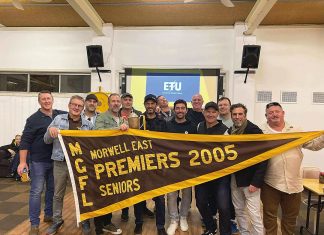AT 21 years of age Jim Saddington felt bullet-proof and fearless.
This feeling led him to board an Australian Army plane to Vietnam on 8 April 1968.
After searching for a “good career prospect”, Mr Saddington followed in his father’s footsteps and joined the Australian Army at just 18 years.
Three years later he was stationed in Nui-Dat, Vietnam.
“We were young and it was something different to do,” Mr Saddington said.
“It was a chance to go outside of Australia, and go somewhere new.
“Just because there was a war going on didn’t make a difference because that is what your job was.”
Working as a diesel mechanic, the young man learnt about the expense of “living in a free country”.
“There was always that (idea) in the back of your mind, you were going there to do your job, you were a soldier first and a tradesmen second,” Mr Saddington said.
Arriving in Vietnam, (overwhelmed) by the humidity, he said “that was when it struck home and we thought ‘this is something different’.”
“Before we went, we were told the enemy wore black pyjamas and conical hats; when you got off the plane the first thing that struck you was the heat, and the second thing was the fact everyone in the airport wore black pyjamas and conical hats, so you suddenly thought ‘who’s who?’.”
Sitting in his lounge room, Mr Saddington’s home resembles a war museum, with walls covered in Rising Sun badges, helmets, model warplanes and bugles.
He said one day he wanted to have his war paraphernalia on display, beyond the Saddington family home.
The Australian Army’s involvement in the Vietnam War began in 1962, where young men, upon arrival, were issued with a rifle and live ammunition.
Mr Saddington said it was not until he was holding his rifle that he started to (understand) the magnitude of his job.
After one year and one day he returned to Australia in 1969, during the dark of the night to avoid the 1960s anti-war protestors which were camped at Sydney airport.
“I don’t think we gave much thought to it because the main thought in our minds was that we were home,” he said.
“Australia has come a long way since then; people realise we need to defend our country and way of life.
“The troops that go overseas now need to know that people in Australia support them.”
This Wednesday marks Australian and New Zealand Army Corps Day, which commemorates those who died and served in military operations for their country.
Mr Saddington said Anzac Day was not a celebration of war but a national day of remembrance.
“It gives us a chance to think about our mates and those who lost their friends and give them a chance to commemorate the fact we are still a free country,” he said.
This year marks the 70th anniversary of the Battle of Kokoda where about 30,000 allied troops were assembled to fight at Kokoda, many of those from the 2/14th Battalion.
Less than 25 are still in Victoria today.











